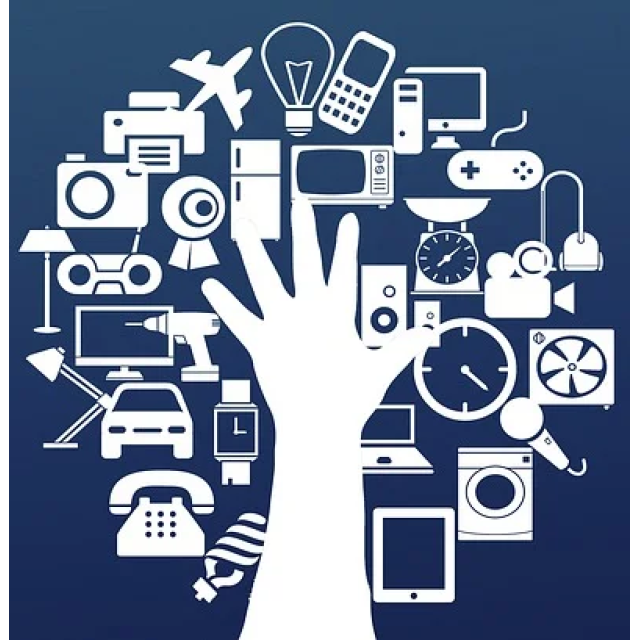
It won’t be long before you lose track of your smart devices due to all the smart home standards. Manufacturers use different protocols and communication standards for their devices. Matter must really bring everything together under one roof. An overview.
Jeffrey van de Velde and Rob Coenraads
Smart home standards have sprung up like mushrooms in recent years. The majority of devices currently use Zigbee (including Philips Hue and WiZ) and Z-Wave. We regularly see the first standard on smart lamps, while Z-Wave is more often used with smart switches. A standard that seems to have a grip on the future of the smart home is Matter. Although we are talking about a standard here, Matter is basically a collaboration between various connection protocols, set up by the Connectivity Standards Alliance (CSA). The protocol initially covers four connection options: Thread, Wi-Fi, Bluetooth and Ethernet. Previously, these different protocols could not communicate with each other, making it difficult for smart devices to work together. Hubs such as the Homey Pro managed to partially solve this problem. However, this did not immediately provide a solution for the not so technically savvy public: you often need some technical knowledge to use those hubs. Systems such as Home Assistant are certainly a bridge too far for them. Matter removes that requirement for technical knowledge and must make smart equipment accessible to everyone.
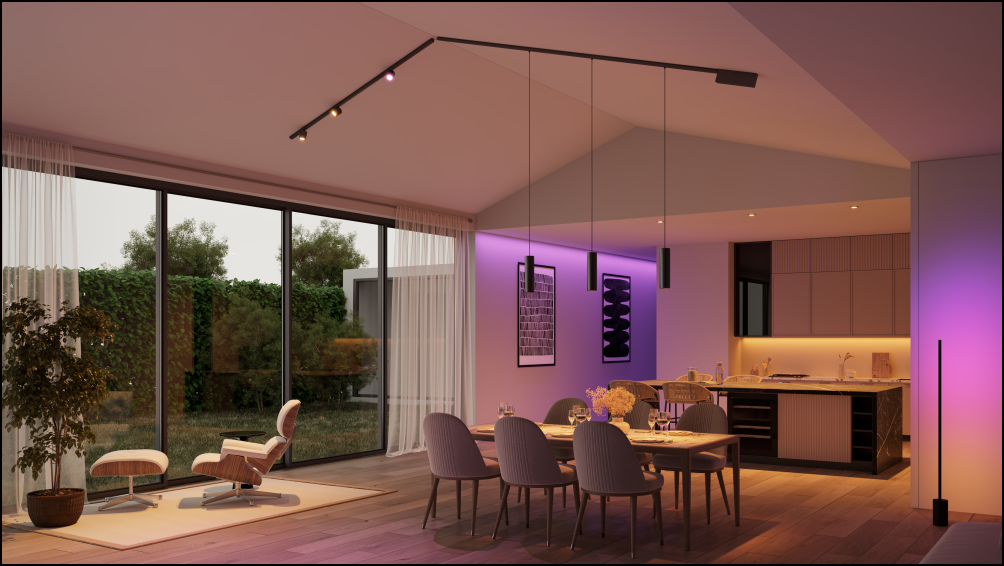 |
|
Philips Hue uses both Bluetooth and the Zigbee protocol |
Zigbee
Before we delve deeper into what Matter has to offer, let’s first take a look at Zigbee and Z-Wave. What kind of standards are they and what do they have to offer? To start with Zigbee… Athom describes the standard as the energy-efficient variant of Wi-Fi for home automation. Like Wi-Fi, Zigbee operates on the 2.4GHz band. Zigbee also borrows a technology that we know from the Wi-Fi standard: mesh. Zigbee equipment always works like this mesh node. In other words: they work as an amplifier of the signal. Each additional device therefore ensures a stronger and more reliable Zigbee network. You would say: that consumes electricity, but the opposite turns out to be true. Small sensors, often equipped with button cell batteries, last up to one year on a battery. You need a connection hub to control devices on the Zigbee network. Such a hub can communicate via that network, while your smartphone cannot. Smartphones do not have such a required Zigbee receiver. This is often seen as the main disadvantage of the standard. A connection hub increases the costs for a smart home by 40 to 400 euros, depending on the chosen hub. The limited range is often seen as a disadvantage of this protocol. Thanks to the 2.4GHz connection, Zigbee has a range of only approximately 15 to 20 meters in the open air. This can quickly decrease indoors, especially in houses with thicker (concrete) walls. In terms of applications, Zigbee is mainly used on smart lamps, but it is also used on door sensors and roller blinds, for example. Unfortunately, there is a catch in this area: because Zigbee is an ‘open’ standard, it is possible that some accessories do not work together (or do not work well) with each other. This usually works well within specific product categories such as lamps. So always check carefully whether equipment works together, if you want to connect them (functionally).
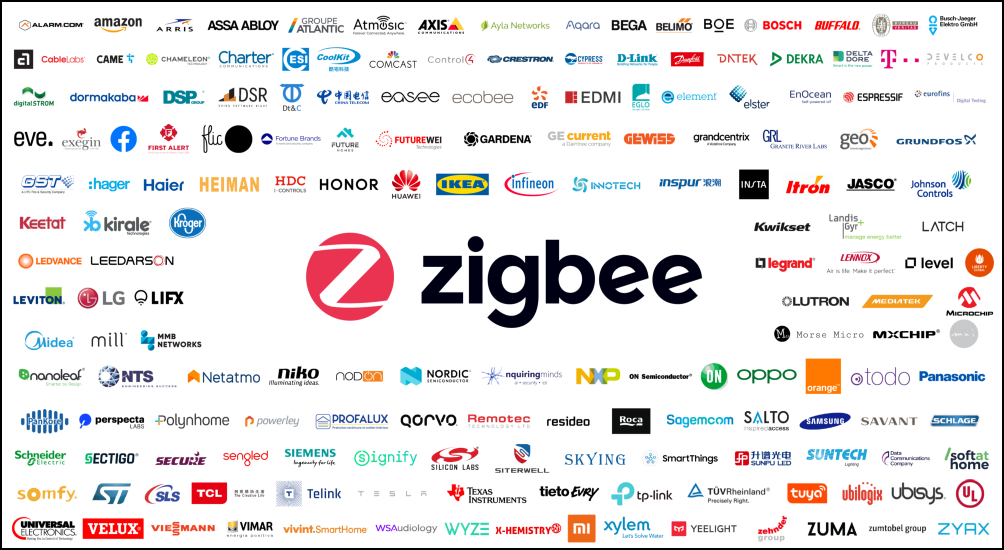 |
|
Many companies use the Zigbee protocol |
Z Wave
Z-Wave is sometimes seen as the solution for Zigbee’s limited range, because Z-Wave is able to achieve a much greater range via the 433MHz band. Another factor is that Z-Wave is not hindered by other devices that also run on the 2.4GHz network, such as via Wi-Fi or Bluetooth. Unless your neighbor also has a Z-Wave network in their home, devices will not get in each other’s way. Just like Zigbee, Z-Wave’s range is ‘increased’ via smart devices, which always function as meshpoint. Are there any disadvantages to this smart home protocol? You will find this mainly in the price tag. Manufacturers must pay a hefty licensing fee for every device offered with a Z-Wave sticker. Devices with Z-Wave are therefore simply more expensive than Zigbee counterparts. That is also the reason why you 
hardly come across smart lamps with Z-Wave. We regularly see smart light switches popping up. Consumers are more likely to accept a higher price for such products, because the price of premium light switches is higher anyway. On the other hand, you can buy a smart Zigbee lamp for less than 10 euros at IKEA. Hubs with Z-Wave are sometimes slightly more expensive than their Zigbee counterparts, but the differences are relatively limited. Good to know: most hubs support one of those standards, unless you buy a Matter or Homey hub: they support most standards.
Wi-Fi and Bluetooth
Unique to Zigbee and Z-Wave is also their ‘local’ character. You always connect devices to a local connection hub; The manufacturer’s servers are not involved. They are therefore seen as a privacy-friendly alternative to WiFi in your smart home. Smart equipment that works via WiFi always requires a connection to the servers of your smart home manufacturer. Every time you switch a smart WiFi lamp on or off, that request goes through servers at home or abroad. In practice you hardly notice this: the operation is still lightning fast. The external connection is also privacy-sensitive. Manufacturers can always see when you operate your lamp and they can resell this data or use it for their own marketing purposes. This data can also be valuable for criminals: after all, it gives an idea of the times when you are or are not at home. However, privacy is not the only drawback of Wi-Fi as a smart home protocol. Does a manufacturer decide to stop producing smart home products or do they go bankrupt? Then you can probably whistle for the smart functions of your lamps and other WiFi equipment. Manufacturers usually give you a hefty discount for these disadvantages. Products that work over Wi-Fi are almost always cheaper than counterparts with Zigbee or Z-Wave support. You also save on hub costs. You can normally also link smart WiFi products to Google Home or Apple HomeKit, in which you can set certain actions. No matter which manufacturer(s) your WiFi products come from, they can probably work together. With Bluetooth you are again tied to a hub (or smartphone) for operation. Just like Zigbee and Z-Wave, Bluetooth relies on two things: energy efficiency and local operation. Comparable to Zigbee, Bluetooth works via a 2.4GHz signal, which means that it is a bit more difficult to get through thick walls. While the aforementioned protocols absorb this via a mesh network, this is not the case with Bluetooth or Bluetooth Low Energy (BLE). This form of control is especially useful if you are in the same room as the smart device. As a result, you will mainly use this type of device as a standalone device. Unless you buy a connection hub, you often can’t even get the equipment to work together. You can still create spaces for Bluetooth lights via the Philips Hue app, so you can turn them on with one click. We sometimes wonder what the place of Bluetooth is in the smart home industry and we always conclude that it is mainly a very accessible way to operate equipment – certainly not the smartest.
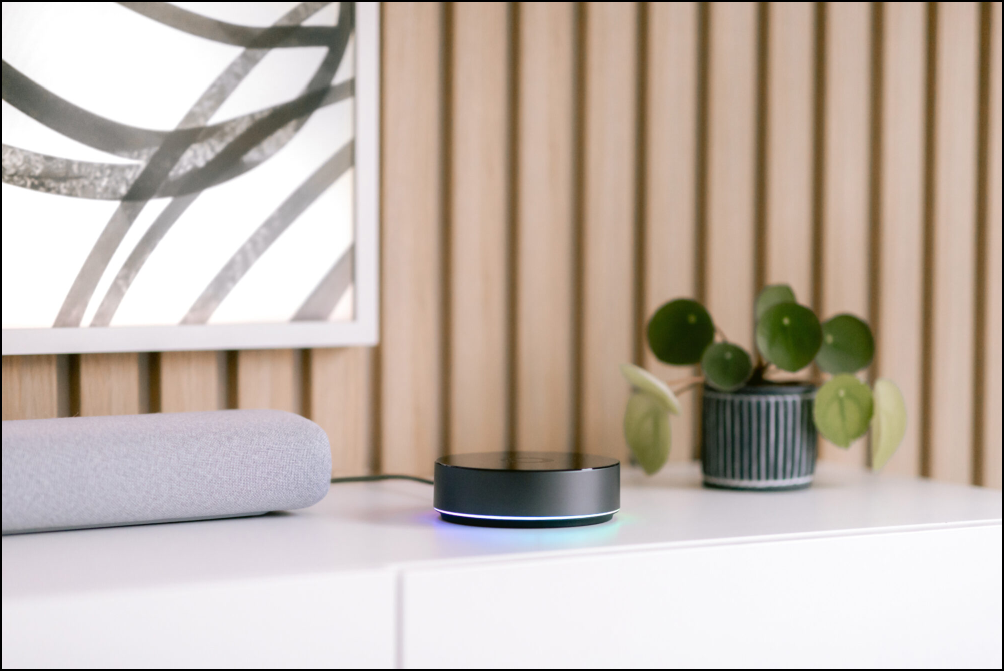
Matter
Apps for every part of your smart home? Protocols that cannot communicate with each other? The Matter smart home protocol wants to put an end to these things. The goal is to make smart home equipment work together better. To achieve this, 276 brands tied the knot with CSA. In 2019, this led to the birth of Project CHIP, or Connected Home over IP. Afterwards the protocol was renamed Matter. When Matter was publicly unveiled, the CSA made a striking promise: if there is a Matter logo on the box, the product will work with other Matter equipment. Point. The CSA thus solves the main pain point of protocols such as Zigbee and Z-Wave. Not only can products from those protocols not communicate with each other: even within a standard, products do not always work together. This will be solved with Matter, the smart home developer promises. For this, it supports various connection options: Bluetooth LE, LAN, Thread and Wi-Fi. Thread is often compared to Zigbee: they both operate over 2.4 GHz and the standard also creates a mesh network (via Border routers). Unlike Zigbee, Thread works via IPv6. To operate Matter equipment on Thread, you need a Border router. These are devices that are connected via Wi-Fi or Ethernet (or both) and connect to the Thread mesh network. Including Google’s Nest Hub,
 Apple HomePod (Mini) and Apple’s TV 4K already offer such a Thread radio. Similar to Zigbee and Z-Wave, you do not connect your Matter equipment to the servers of your smart home manufacturer: all data remains indoors. You also don’t have to buy a connection hub. Simply connect the smart devices to Google Home or Apple HomeKit and bring them to life with various home automation options. If you want extensive operating options, you will still have to switch to a connection hub. These hubs work with equipment from all manufacturers, provided they are equipped with Matter. The Zigbee days really seem to be over…
Apple HomePod (Mini) and Apple’s TV 4K already offer such a Thread radio. Similar to Zigbee and Z-Wave, you do not connect your Matter equipment to the servers of your smart home manufacturer: all data remains indoors. You also don’t have to buy a connection hub. Simply connect the smart devices to Google Home or Apple HomeKit and bring them to life with various home automation options. If you want extensive operating options, you will still have to switch to a connection hub. These hubs work with equipment from all manufacturers, provided they are equipped with Matter. The Zigbee days really seem to be over…
What does Bluetooth LE actually do in this story? As mentioned earlier, its reach is extremely limited. In Matter, Bluetooth is also not used to operate equipment. BLE is only for setting up devices, the CSA explains. For this purpose, the equipment emits a BLE signal during setup. It does not yet appear that BLE will also become a permanent fixture in Matter’s operating options.
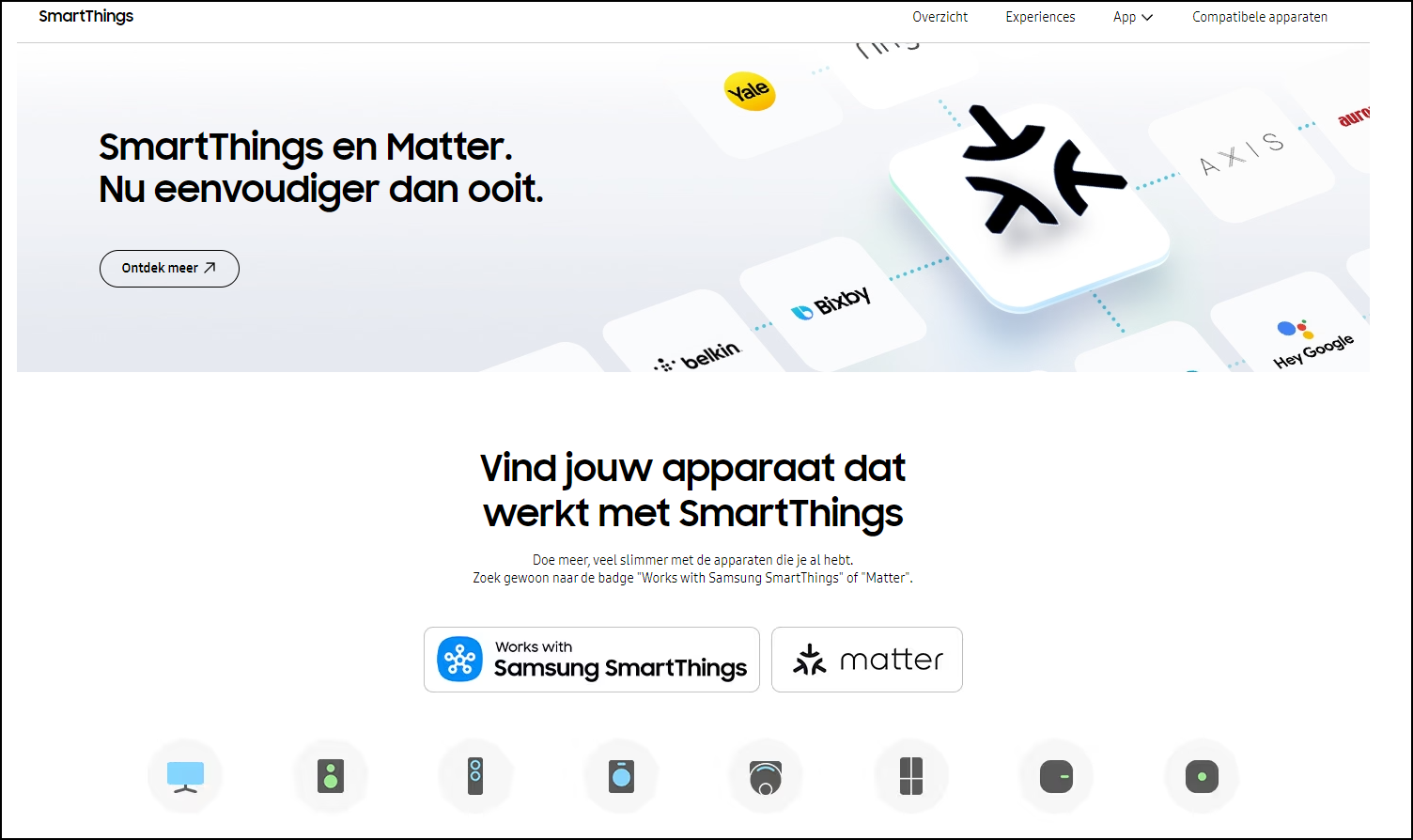 |
|
Samsung SmartThings also uses Matter |
End of Zigbee?!
The CSA hopes that manufacturers will exchange Zigbee and Z-Wave for Matter. For now, things don’t seem to be going very well. Brands that have been using the protocols for years, such as Philips Hue, are in no hurry to move to Matter and do not immediately benefit from it. Signify (Hue), for example, will see its Hue Hub revenues evaporate. Matter also has to prove itself as a smart home standard. The CSA promises to release two updates every year and at the time of writing the last update was at the end of October 2023. Then the CSA released version 1.2 with support for 9 types of home appliances: refrigerators, air conditioners, dishwashers, washing machines, robot vacuum cleaners, smoke detectors , air quality sensors, air purifiers and fans.
These continuous updates make the platform future-proof, but manufacturers are also becoming cautious: after all, the standard is not really finished yet. Whether a Matter revolution awaits us? That is a question that will receive an answer in the near future. Smart home manufacturers simply do not respond quickly to new standards: ultimately, they mainly want to continue to serve their existing customer base using the standards they know. If Matter catches on, it may also mean the end of Zigbee. In terms of content, Zigbee is largely the same as CSA’s emerging protocol. Will Z-Wave also disappear from the stage? This standard does have the advantage that it operates at a lower frequency and therefore has a greater range. At the same time, it is a costly option, for which manufacturers may prefer to find a free successor. We see a future with Matter by our side. Now let’s hope that the CSA keeps its promises.